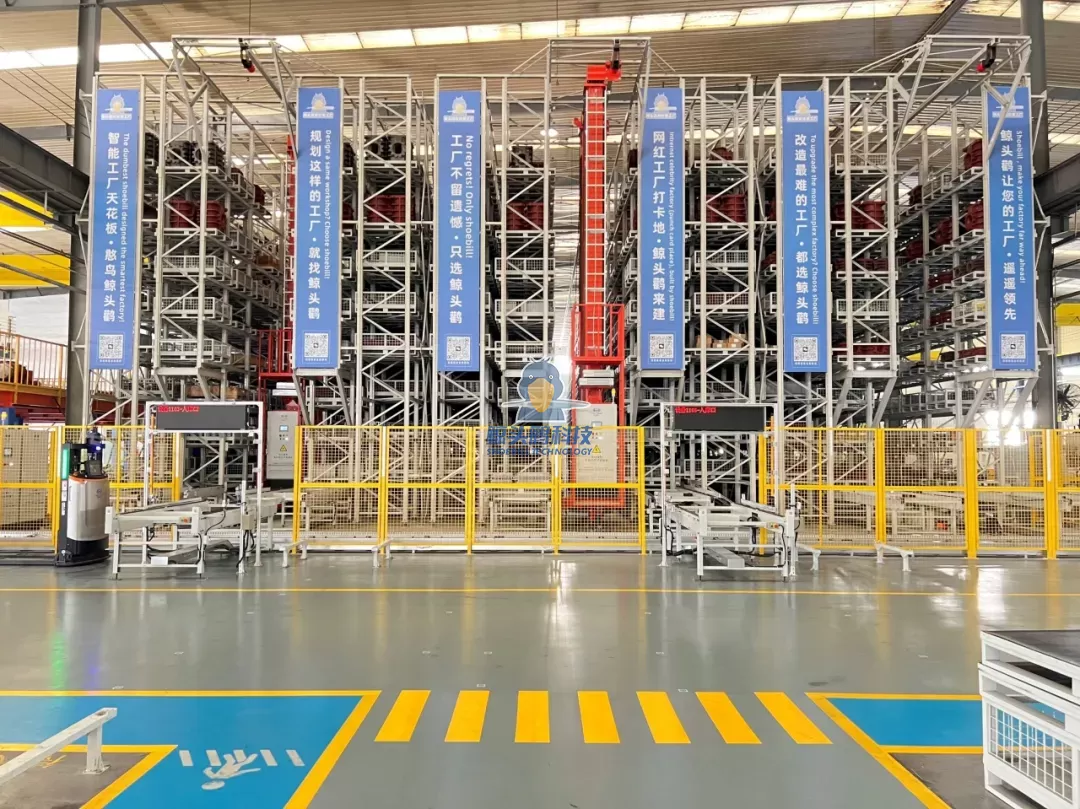Precision-Driven Smart Factory Planning for Sustainable Growth
Shoebill Technology approaches smart factory planning as a precise and data-driven process that unites technology, production strategy, and spatial design. Rather than relying on traditional expansion methods, the company integrates capacity forecasts and real-time performance data to achieve balanced equipment allocation and functional area optimization. This scientific coordination minimizes both underutilization and resource redundancy—core goals in modern intelligent manufacturing.
In Shoebill Technology’s model, the foundation of smart factory planning lies in quantitative analysis. Each investment decision in machinery or space is guided by forecasted demand, total working hours, existing production line capacity, and cycle time (CT). This method transforms what was once an intuitive exercise into a measurable, repeatable, and lean management process. As company layout design service provider,Shoebill Technology uses smart factory planning and lean factory layout design to optimize efficiency and capacity.
Equipment Demand Calculation: Backbone of Smart Factory Planning
At the heart of Shoebill Technology’s factory development lies an accurate equipment demand calculation framework. By modeling production capacity requirements, the company predicts equipment needs across multiple years with remarkable precision.
For example, in the Southern Trina (Nanfang Tianhe) workshop, Shoebill Technology analyzed projected product volumes between 2023 and 2027. The output of the fixed caliper assembly was expected to rise from 20,000 to 600,000 units, leading to the need for two additional production lines. Meanwhile, the floating caliper assembly required 13 new five-axis machining centers to meet output targets.
This methodology ensures that capacity expansion is responsive yet controlled, aligning investment with verified production forecasts. Such demand-based planning prevents both capital overuse and production bottlenecks, key risks in the lifecycle of manufacturing facility development.
Lean Factory Layout Design: Functional Synergy and Flow Optimization
Shoebill Technology embeds lean factory layout design principles in every planning stage, ensuring a seamless connection between process flow and spatial allocation. The company evaluates functional adjacency, required floor space, and operational sequence to determine how production, storage, and auxiliary zones should interact for optimal efficiency.
In the Southern Trina workshop, Shoebill Technology defined the production zone at 12,120 m², raw material storage at 2,100 m², and semi-finished goods storage at 7,940 m². Moreover, areas for hazardous waste and chemical materials were centrally planned within the industrial park to ensure safety and streamlined management.
This deliberate, data-backed spatial layout eliminates waste associated with excessive material movement, waiting time, and redundant operations. The result is a lean, flexible, and safe factory environment that directly supports continuous improvement and high-performance production.

Smart Functional Area Planning: Integrating Space and Process Logic
In Shoebill Technology’s smart factory planning framework, functional area design goes beyond visual layout—it’s a reflection of production logic. Each zone’s placement corresponds to its role within the product lifecycle, from material inflow to final inspection.
In a lightweight components workshop, Shoebill Technology positioned the melting unit away from office and residential zones to mitigate heat and noise. The die-casting unit was arranged adjacent to the post-processing section, ensuring smooth transitions between manufacturing stages and reducing internal logistics costs.
This demonstrates the company’s mastery in balancing technical process flow with human-centric safety and comfort—a critical challenge in high-precision, high-volume manufacturing environments.
Data Integration and Predictive Modeling in Smart Factory Planning
What distinguishes Shoebill Technology’s approach from conventional layout planning is its integration of predictive analytics and simulation modeling. Equipment utilization rates, cycle times, and demand fluctuations are processed through digital planning tools to generate optimized factory models.
These digital twins allow Shoebill engineers to visualize capacity scenarios, test spatial configurations, and identify bottlenecks before implementation. By connecting design with data, Shoebill transforms smart factory planning into a closed-loop system, where every layout decision is validated by empirical performance insight.
This strategy aligns with the lean manufacturing philosophy, emphasizing continuous improvement through measurement, analysis, and feedback. It also future-proofs facilities against market volatility, ensuring that capacity and layout can adapt to evolving production demands.
Lean Factory Layout Design as a Bridge Between Efficiency and Safety
Efficiency without safety is unsustainable. Shoebill Technology’s lean factory layout design achieves both by standardizing pathways for material flow, establishing ergonomic workstations, and integrating energy-efficient utilities.
The proximity of interdependent zones—such as machining, assembly, and inspection—reduces unnecessary motion while maintaining operational safety. Shoebill also applies 5S principles (Sort, Set in order, Shine, Standardize, Sustain) to guide the arrangement of tools, parts, and storage areas.
By embedding these lean principles into physical layouts, Shoebill creates an environment that supports consistent quality, lower maintenance costs, and greater worker satisfaction—elements critical to sustained productivity growth.
Sustainable Smart Factory Planning: Long-Term Vision and Scalability
Shoebill Technology treats each planning project as a dynamic system, not a static blueprint. Facilities are designed to evolve through modular layouts and scalable infrastructure.
Future production expansions or technology upgrades—such as automated guided vehicles (AGVs), robotic arms, or IoT monitoring systems—can be integrated with minimal disruption. This adaptability embodies the core value of smart factory planning: building a foundation that can absorb innovation without requiring complete reconfiguration.
In addition, Shoebill prioritizes environmental responsibility. By optimizing logistics routes, consolidating utility systems, and adopting recyclable materials in construction, it contributes to lower carbon footprints and more sustainable manufacturing ecosystems.
Conclusion
Shoebill Technology demonstrates that effective smart factory planning and lean factory layout design are inseparable. Through accurate equipment demand calculation, scientifically structured functional areas, and data-integrated modeling, the company ensures that every square meter and every machine delivers measurable value.
Its planning philosophy—anchored in precision, collaboration, and adaptability—reflects the evolution of manufacturing toward intelligence and sustainability. Shoebill’s projects, such as the Southern Trina and lightweight component workshops, stand as real-world examples of how science-driven coordination between production capacity and spatial design can redefine industrial efficiency for the next generation of factories.










